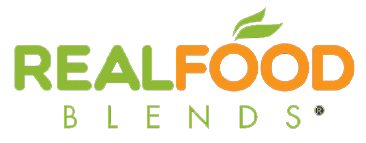By Sharon Weston, MS, RD, LDN, CSP, FAND
Blenderized tube feeding (BTF) is becoming an increasingly popular choice among families and individuals seeking a more natural, personalized approach to enteral nutrition. Whether you’re looking to transition from standard formulas or supplement with real food, starting the conversation with your healthcare provider (HCP) is a critical first step. Some patients or caretakers may feel unsure about how to bring up blenderized tube feeding, what questions to ask, or how to respond to concerns. Learning some tips and practical strategies to help prepare, communicate effectively, and work collaboratively with your healthcare team can lead to a successful transition to blended feeds.
Blenderized tube feeding may offer several potential benefits, such as:
- Improved digestion and tolerance
- Reduced reflux, gagging, and constipation
- Greater inclusion of real, whole foods
- Opportunities to tailor blends to personal, cultural, or medical needs
- A more natural feeding experience for patients and caregivers
Despite these advantages, blended tube feeding is still unfamiliar territory for some healthcare providers, especially in clinical settings where commercial formula is prevelant. That’s why being prepared, respectful, and collaborative in your approach can help open the door to supportive, informed discussions.
How to Talk to Your Healthcare Provider About Starting Blenderized Tube Feeding:
- Clarify Your Reasons for Wanting Blended Feeds
Before your appointment, take time to reflect on why you’re interested in blenderized tube feeding. Are you seeing issues with current formulas, like constipation or reflux? Do you value feeding with real food for emotional, cultural, or philosophical reasons? Are you hoping to reduce synthetic ingredients or additives?
Write down 2–3 main points. This helps you start the conversation with clarity and confidence.
Example talking points:
- “My child has ongoing GI symptoms on formula, and I’ve read that blenderized tube feeding might help with tolerance.”
- “We’re looking for a more natural approach to tube feeding and feel that real food might align better with our family’s values.”
- “We want to include foods that reflect our cultural meals, and blenderized feeds might offer that flexibility.”
- Learn the Basics
Doing your homework shows your healthcare provider that you’re serious, informed, and open to guidance. This also helps you respond to common concerns such as safety, nutrition adequacy, or risk of tube clogging.
Key points to know:
- Blenderized tube feeding can be delivered via a G-tube (14 Fr or larger) using syringe, gravity, or pump methods.
- Recipes can be created or reviewed by a dietitian to ensure they meet all nutritional needs.
- Commercially prepared BTF (CBTF) products are available and shelf stable. Real Food Blends® is a commercial option that offers 100% real food meals with no synthetic ingredients.
- High-powered blenders and proper straining reduce the risk of clogs.
- Blends can be made safely with proper food handling and hygiene practices.
- Collaboration is Key
Healthcare providers may feel hesitant if they’re unfamiliar with blended feeds but framing the conversation as a partnership rather than a confrontation helps build trust. Rather than saying “We’re switching to blended tube feeding,” try:
Collaborative phrasing:
- “We’d love your guidance as we explore whether blended tube feeding is right for us.”
- “We’re interested in trying blenderized tube feeding, even just one meal a day to start. Could we work with a dietitian on this?”
- “Would it be possible to use a combination of standard formula and blenderized tube feeding to help with some of the symptoms we’re seeing?”
This approach invites the healthcare provider to be part of the solution and provides room for shared decision-making.
- Involve a Registered Dietitian Early
One of the strongest ways to ensure success is to request or include a dietitian who is familiar with blenderized tube feeding in the process. Dietitians can:
- Help assess nutritional needs
- Create or evaluate blenderized diet recipes
- Recommend safe multivitamin/mineral additions
- Guide proper food handling
- Support gradual transitions
Let your healthcare provider know you’re committed to doing this the right way.
Phrase to use:
“We’d like to make sure we’re covering all nutrition bases. Can we schedule time with a dietitian who is familiar with blenderized tube feeding to help us build a safe plan?”
- Start Small: Propose a Trial or Hybrid Approach
You don’t need to overhaul everything at once. In fact, starting slowly often builds trust and allows time to observe tolerance. Start with one blended feed per day and the rest standard formula. Monitor for improvements in energy, digestion, or mood. This hybrid approach allows flexibility and helps healthcare providers feel more comfortable with the change.
Suggestion to offer:
“Could we try just one blenderized meal a day, and keep the rest of the feeds as is? That way we can monitor tolerance and make adjustments.”
- Reassure Food Safety Measures
Some providers are concerned about food safety, microbial risk, or inconsistent nutrients. These concerns are valid but manageable with proper precautions.
Let your HCP know you plan to:
- Use a high-powered blender
- Store prepared blends safely (refrigerate up to 24 hours, freeze portions)
- Follow food safety precautions, cleanliness, safe thawing and reheating practices
- Strain blends as needed for smoother consistency
- Add a multivitamin or electrolyte supplement as needed
You can even bring a sample commercial blenderized tube feeding product to your appointment to show what’s available and how easy it is to use.
- Respect Differences
Some healthcare providers may still be hesitant and that’s okay. Rather than seeing it as a rejection, treat it as the beginning of an ongoing conversation. You can always revisit the topic later with more information or results from your trial. If necessary, seek a second opinion or connect with a dietitian who has experience with blended tube feeding. Support groups and online communities can also provide insight and shared experiences that empower you.
Starting blenderized tube feeding is a personal decision that should be respected and supported. As a patient or caregiver, you have the right to ask questions, explore alternatives, and advocate for the best care, including nutrition that aligns with your values and needs. Whether you go fully homemade, choose commercial blended feeds, or use a combination, starting the journey begins with one important conversation. Many families have successfully made the transition to blenderized tube feeding and found it empowering. Like any change, it takes time, learning, and support but with the right tools and the right team, it’s very achievable.
Sharon Weston is a consultant for Nutricia North America and has been compensated to write this blog post.
Resources:
The Oley Foundation: https://oley.org/page/CaregiverParents
NASPGHAN GIKids.org: https://gikids.org/digestive-topics/blenderized-tube-feeding/
NASGPHAN Culinary Medicine Webinar Series: Blenderized Tube Feedings
https://gikids.org/food-as-medicine/
Comments are closed.






